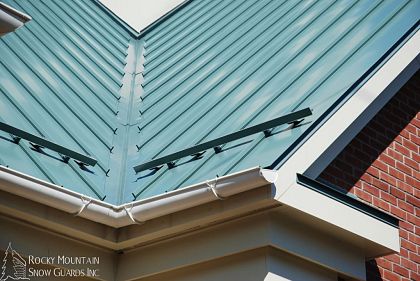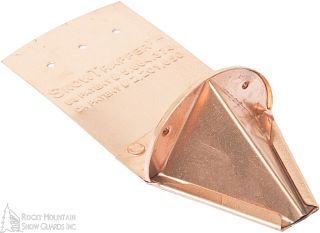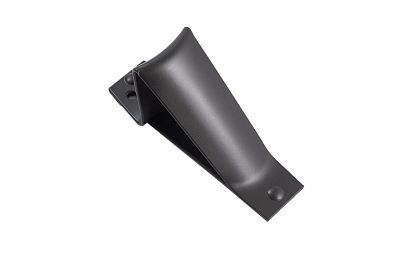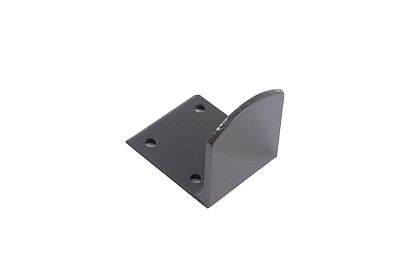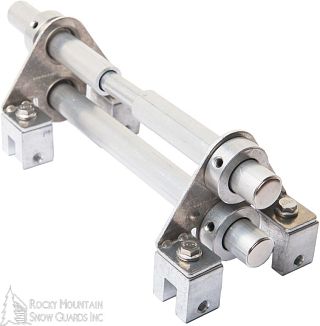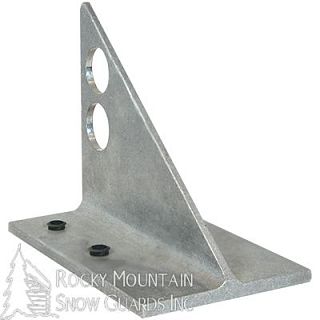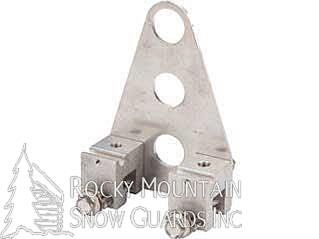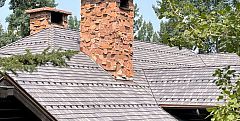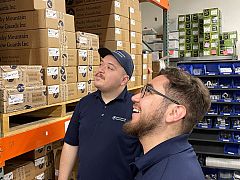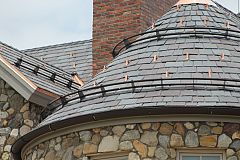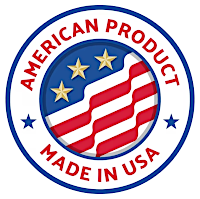At Rocky Mountain Snow Guards we sell aluminum, copper and steel snow retention systems for metal roofs. But there are other types of snow guards for metal roofs that we don’t sell and it’s quite possible that one of those might be the best solution for your needs.
Our mission is to help building owners select the snow retention system that works best for their situation. Whether it’s our product or not. With so many types of metal roofs and snow guard systems available, narrowing down the best one for your home or project can be confusing.
I’ve personally spent many hours searching and condensing information from our competitor’s sites and noticed that every site has one thing in common. Each manufacturer presents their snow guard or snow retention system as the best and offers up various reasons why their particular product is better than others. Obviously, every snow guard and every manufacturer can’t be the best. What I realized is that an architect, homeowner or contractor researching metal roof snow guards faces a daunting task of determining which is the best snow guard for their metal roof.
The cheapest and easiest snow guard to install may not be the best fit for your situation. Likewise, the most expensive and elaborate may not do what you expect it to. To help answer these questions, I started out on my mission of distilling the different metal roof snow retention systems into a single, objective summary. Explaining each type and the advantages and disadvantages with that specific snow guard. Many of these are products we sell, but many are not. I hope that this series of articles will help you make a good, informed decision about the best type of snow retention for your metal roof. Even if you decide not to purchase your snow retention system from Rocky Mountain Snow Guards.
All snow guard system types are designed to keep snow on your roof to protect you, your family, and your property from falling ice and snow. Metal roofs have a very smooth surface that doesn't absorb water. That’s why metal roofs are good roofs but also why snow and ice slide off.
In a nutshell, there are 3 different snow guard types for metal roofs that are currently in use. This article briefly discusses each type. Additional articles follow this one that go in-depth into each type including manufacturing materials, methods of attachment and most importantly, the advantages and disadvantages of each type.
The 3 Types of Snow Guards for Metal Roofs
Snow Guards
Snow Guards are what most people would commonly think of as “snow guards”. They’re individual units that are attached in a pattern, usually to the flat part of a metal roof but sometimes clamped to the seam . They can be installed on standing seam panel roofs, through fastened metal panel roofs and on most metal shingles.
These snow guards are called by many different names including snow birds, snow cleats, snow pads, snow dogs, snow jacks and several others. They come in many shapes and sizes and are manufactured in a number of different metals and plastics. No matter the name, all are designed to stop the downward movement of snow on a metal roof until the snow melts and comes off as water, or falls off the roof in small amounts that will not damage property or hurt people.
Snow Guards are attached to the roof surface by adhering with liquid adhesive or tape. They may also be attached mechanically with screws that penetrate the metal panel and grip the wood decking or substructure below the metal roof. A second category of snow guards are those that clamp to the seam of a standing seam metal roof.
There are 2 basic styles, small and large profile
Small Profile Snow Guards:
Small profile snow guards such as the Zaleski #15, have a pad area (face) of less than 4 square inches. This type is best thought of as friction to keep the snow blanket in place. A pattern of small profile snow guards is attached to the roof starting near the eave and continuing to the peak or near the peak of the roof. Generally, a higher density of small profile snow guards is installed near the bottom of the roof area with a lighter density of snow guards higher up the roof.
Low profile snow guards are less conspicuous than large profile snow guards. Because of their smaller face area more are required to achieve the same result of large profile snow guards. In addition, these are less effective in high snow loads and on steeper pitches. At Rocky Mountain Snow Guards, our small profile snow guard for metal roofs is our ST6 snow guard with just under 3 square inches of pad area.
Large Profile Snow Guards:
Large profile snow guards such as the Polar Blox Universal, have a pad face of more than 4 square inches and function more as a barrier to snow movement (More like a snow fence). Some large profile snow guards may have a pad face area as large as 15 square inches.
This type of snow guard is generally installed in a row or a slightly staggered row approximately 12” from the eave edge. Additional rows may be required on steeper pitches and on roofs with long eave to peak dimensions as well as roofs with higher maximum snow loads.
Although fewer large profile snow guards may be required to control snow than small profile snow guards, they are much more visible on the roof. Examples of our large profile snow guards for metal roofs include the Rocky Guard RG5 (4.68 square inches), and our Rocky Guard RGW (6.88 square inches).
Bar-Style Snow Guards
This type of snow guard is a continuous length of rectangular metal “bar” that is installed horizontally across the metal roof to form a barrier to snow and ice. An example of a Bar-Style snow guard is the ColorGard system by S-5!®. by Bar-Style snow guards look very clean on the roof with their streamlined modern styling. Often only one row will be needed but more rows may be necessary depending on the pitch of the roof, the distance from the eave to the peak and the snow load present. Some projects will require several rows to handle the load.
A bar-style snow guard is a system that is comprised of a bracket of some sort to which the bar is attached. The bracket is mechanically attached to the decking or roof structure below the metal roof with screws, or the bracket may be clamped to the seams of a standing seam roof.
An example of mechanical, screw attachment is the S-5! Versabracket. The S-5! U Clamp is a good example of a clamp that will fit a wide range of standing seam configurations. Clamps offer a method of mechanical attachment that doesn't penetrate the metal roof. Adhering bar-style snow guards is not an option because snow loads on the brackets would be too great for adhesion alone.
One excellent feature of many bar-style snow guards is the ability to attach a piece of the metal roof onto the bar so the aluminum color is hidden by matching the color of the roof. The SnoGem 2” iClad is an example of a snow bar with matching metal attached.
Fence Style Snow Guards
Fence-Style snow guards are similar to bar-style snow guards but instead of a single bar, these systems feature two or more tubes vertically oriented like a split rail fence. Fence-Style snow guards are often used on custom homes and in situations where a less modern appearance than a bar-style snow guard is desired. An example of a bar-style snow guard is our Blizzard II Clamp-to-Seam System.
Like the Bar-Style snow guard, 2 methods of attachment are used. The Alpine SnowGuards #145 is an example of a bolt attached fence-style snow guard.
An example of a clamp attached fence-style system is the PMC A-2 3 Rail Bracket.
Some fence-style snow guard systems are exceptionally strong. These are a typical choice in alpine areas where snow loads exceed 75 pounds per square foot and may be many times higher.
For much more detailed information on the best snow guards for each roof type, please choose your roof below:



